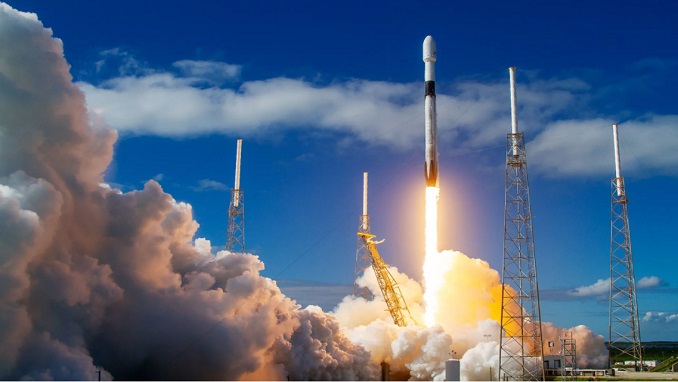
Up to 40 Starlink internet satellites, launched in early February, were prevented from entering orbit by a magnetic storm that has effectively ruined the spacecrafts, SpaceX said in a statement.
SpaceX has launched into orbit 49 Starlink satellites on a Falcon 9 rocket on 3 February from NASA’s historic Pad 39A at the Kennedy Space Centre at Cape Canaveral, Florida.
Only a day later, most of the spacecrafts were doomed by a geomagnetic storm above Earth that slightly increased the density of the atmosphere, increasing drag on the satellites. It was prompted by a powerful M-class solar flare on 30 January, which lasted for over four hours and was followed by a coronal mass ejection.
The company said the satellites were put into a safe-mode flying edge-on to ensure protection against the storm and the increased drag at the low altitudes prevented them from leaving safe-mode to begin orbit raising maneuvers.
That has prompted up to 40 of the satellites to reenter or already have reentered the Earth’s atmosphere which essentially means they’re doomed since satellites are designed to die upon reentering the atmosphere to prevent collisions with other objects in orbit, as well as orbital debris from reaching the Earth.
The company, whose Starlink project aims to provide affordable access to broadband internet connection across the world, noted that its devices were deployed into lower orbits so it can quickly be de-orbited by atmospheric drag if, by any chance, it does not pass initial system checkouts.
On top of that, the company believes that low deployment altitude deployment it’s the right thing to do to maintain a sustainable space environment although it requires more capable satellites which comes at a considerable cost to the company.
SpaceX has already launched 2,000 satellites and has permission to send up 12,000 in total from the US authorities.

Be the first to comment